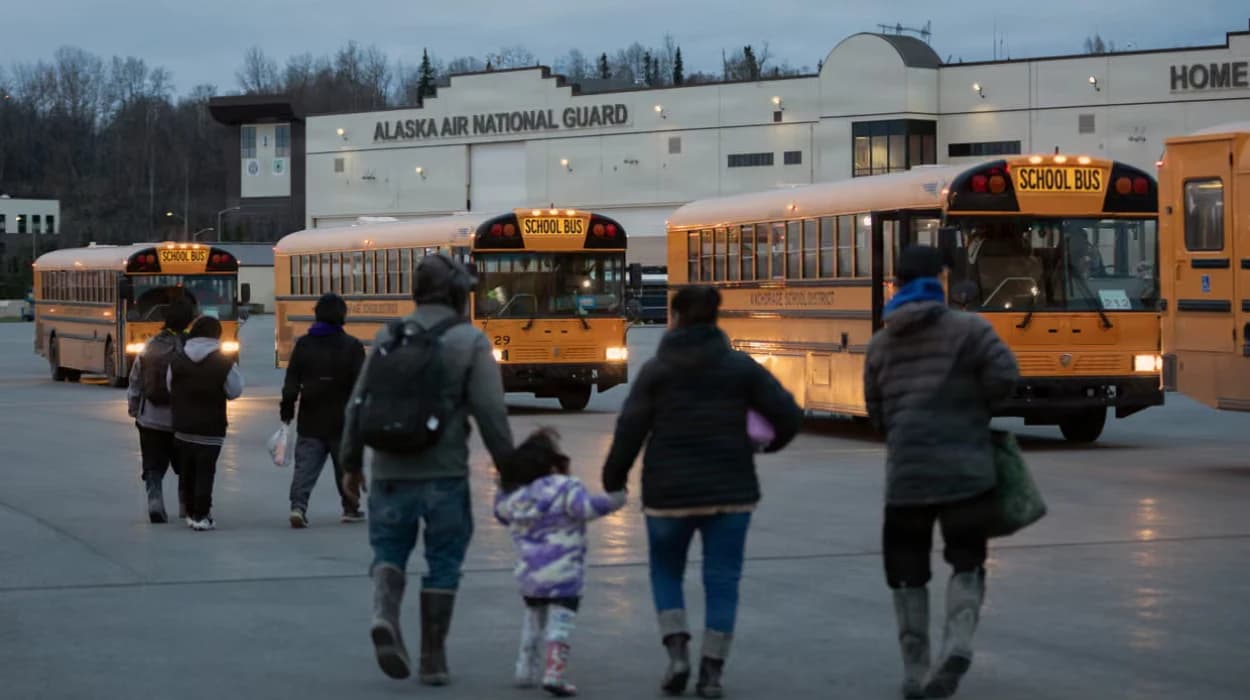Summary
- Governor Dunleavy requests Trump declare Alaska disaster.
- Powerful storm devastated southwest villages, displacing 1,500 people.
- Large-scale air evacuations ongoing due to flooding, destruction.
In order to enable more federal resources to enter the area and fix housing and utilities before winter arrives, the senators and congressmen from the state pleaded with the president to accept the designation. Senators Lisa Murkowski and Dan Sullivan, along with b Nick Begich of Alaska, noted that the disaster's scope has outgrown the state's capacity to respond.
“This significant storm affected thousands of miles of coast, spanning the Aleutian Islands to the North Slope,”
the letter to Trump states.
“Immediate federal assistance is needed to support Alaskans recovering from the damage of this storm and to mitigate the impact of future severe weather events.”
Over the weekend, the Yukon-Kuskokwim Delta's isolated Alaska Native settlements were pounded by the leftovers of Typhoon Halong, which brought record-breaking storm surge, rain, and strong winds that poured water into homes and caused some to float off their foundations. Two people are still unaccounted for, and at least one person was slain.
The state set up temporary shelters, which quickly expanded to accommodate roughly 1,500 people, a remarkable figure in a thinly inhabited area where, at this time of year, villages are only accessible by air or sea. Earlier this week, Alaska Public Media reported that up to 1,000 people were being accommodated in just two local schools before evacuees were moved to larger shelters.
However, because of the difficult conditions, which included restricted access to restrooms and power, the state started transporting people by plane to larger shelters in Anchorage, which was roughly 500 miles (805 km) away.
Devastation was widespread, and authorities are still assessing the entire extent of the devastation. According to locals, the storm wrought havoc, pushing waves into their homes and trembling southwest villages like an earthquake.
In the Alaska Native village of Kipnuk, Alexie Stone, who was with his brothers and children, said over the weekend he could look outside and see under the water, like an aquarium. A shed drifted toward them, threatening to shatter the glass, but turned away before it hit.
The house came to rest just a few feet away from where it previously stood, after another building blocked its path. It remains uninhabitable, along with most of the village.
“In our village, we’d say that we’re Native strong, we have Native pride, and nothing can break us down. But this is the hardest that we went through,”
Stone said on Thursday outside a shelter in the Alaska Airlines center in Anchorage.
“Everybody’s taking care of everybody in there. We’re all thankful that we’re all alive.”
Stone’s mother, Julia Stone, is a village police officer in Kipnuk. She was working last weekend when the winds suddenly picked up and her police cellphone began ringing with calls for help from residents – some who reported that their houses were floating. She tried to reach search and rescue teams and others to determine if there were available boats to help, but the situation was “chaos”, she said.
“It’s a nightmare what we went through, but I thank God we are together,”
she said.
What aid programs are available for storm-affected communities in Alaska?
The Individual and Family Grant (IFG) Program and Temporary Housing Program (THP) offer timely financial assistance to individuals and families for necessary disaster-related expenses, temporary housing, repairs, and other serious needs not covered by insurance.
The Federal Emergency Management Agency (FEMA) offers disaster assistance for housing, repairs, and other unmet needs. Applications must be made separately for the state assistance programs but survivors are encouraged to apply to both programs to maximize their possible assistance.
The U.S. Small Business Administration or SBA provides low-interest loans to eligible small businesses, private non-profits, and individuals who were economically or physically impacted by the storm. The loan amounts can be as high as $2 million with generous repayment options.

